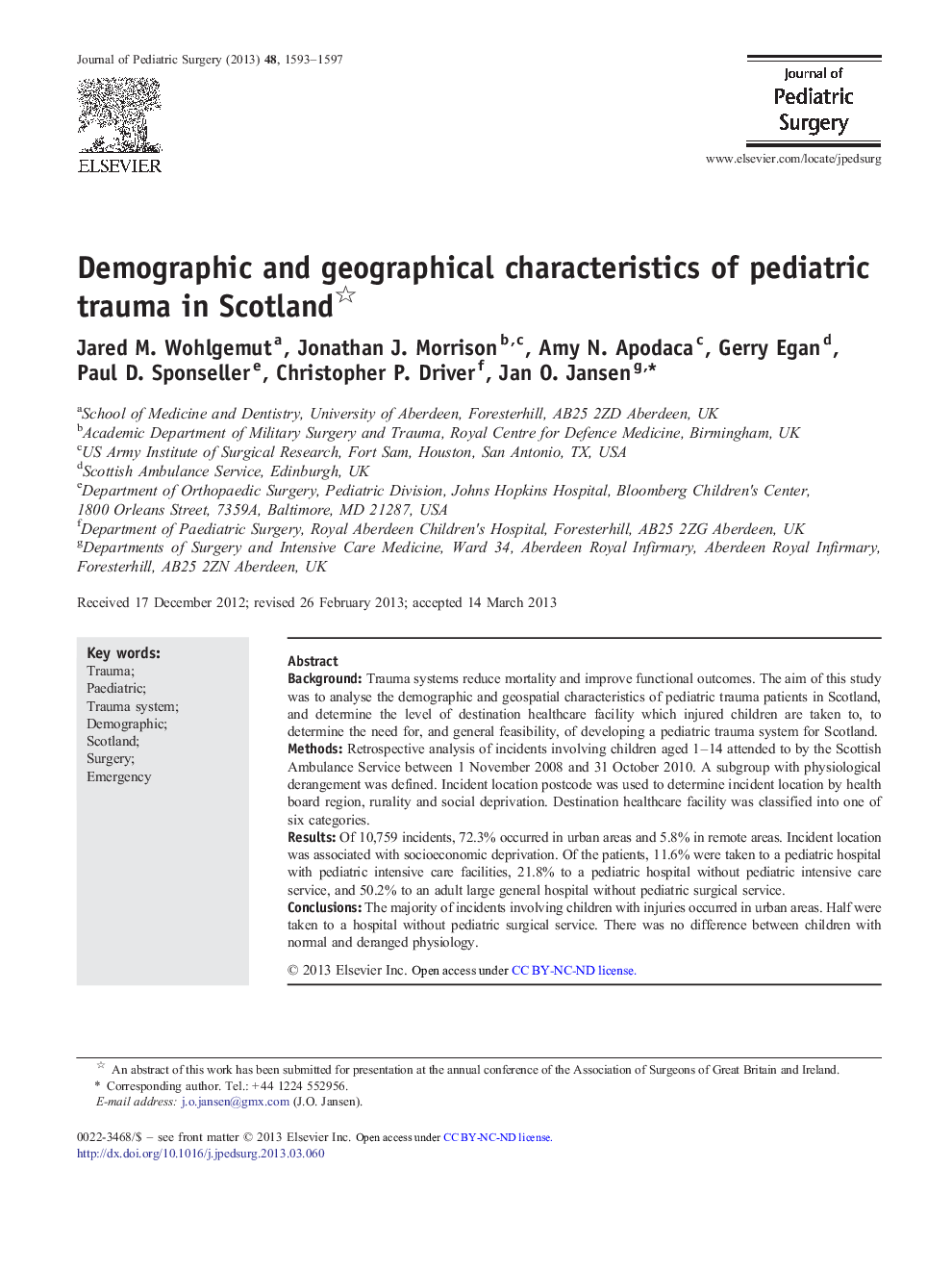| Article ID | Journal | Published Year | Pages | File Type |
|---|---|---|---|---|
| 6217097 | Journal of Pediatric Surgery | 2013 | 5 Pages |
BackgroundTrauma systems reduce mortality and improve functional outcomes. The aim of this study was to analyse the demographic and geospatial characteristics of pediatric trauma patients in Scotland, and determine the level of destination healthcare facility which injured children are taken to, to determine the need for, and general feasibility, of developing a pediatric trauma system for Scotland.MethodsRetrospective analysis of incidents involving children aged 1-14 attended to by the Scottish Ambulance Service between 1 November 2008 and 31 October 2010. A subgroup with physiological derangement was defined. Incident location postcode was used to determine incident location by health board region, rurality and social deprivation. Destination healthcare facility was classified into one of six categories.ResultsOf 10,759 incidents, 72.3% occurred in urban areas and 5.8% in remote areas. Incident location was associated with socioeconomic deprivation. Of the patients, 11.6% were taken to a pediatric hospital with pediatric intensive care facilities, 21.8% to a pediatric hospital without pediatric intensive care service, and 50.2% to an adult large general hospital without pediatric surgical service.ConclusionsThe majority of incidents involving children with injuries occurred in urban areas. Half were taken to a hospital without pediatric surgical service. There was no difference between children with normal and deranged physiology.
